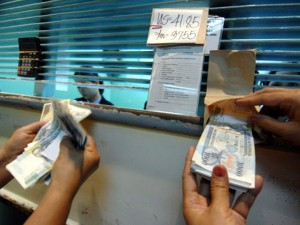Remittances hit all-time high in 2014
MANILA, Philippines–Cash received by Filipino families from relatives working overseas rose to a record high in 2014, helping support economic growth by fueling consumer spending.
As skilled labor stayed in demand despite uneven global economic conditions, remittances from overseas Filipino workers (OFWs) rose in December to the highest level for any single month on record. In 2014, Remittances were also at their highest level for any year.
“The sustained increase in remittances during the year was underpinned by the steady rise of remittances from land-based workers with contracts of one year or more,” the Bangko Sentral ng Pilipinas (BSP) said in a statement.
Having more remittances from land-based workers with longer contracts is an indication of the sustainability of these flows. Bulk of cash transfers in 2014—or $18.7 billion—were from land-based workers.
“Strong demand for skilled Filipino manpower contributed to the steady growth of remittances,” the BSP said.
Article continues after this advertisementIn December, remittances were up 6.6 percent to $2.32 billion. The growth for the month was faster than November’s 2 percent.
Article continues after this advertisementFor all of 2014, cash transfers rose by 5.8 percent to a record $24.31 billion. Earlier, the BSP projected that remittances would grow by at least 5.5 percent.
Between 10 million and 12 million Filipinos work overseas, making the Philippines one of the world’s top labor exporters. The country is the third-largest recipient of cross-border cash transfers behind India and China.
Remittances from OFWs every year reached the equivalent of 8.5 percent of gross domestic product (GDP) in 2014. These cash transfers are seen as a strong driver for consumer spending that makes up two-thirds of domestic output.
It also forms the biggest component of the economy’s current-account surplus, or a summary of all recurring forms of foreign exchange income for the country. This surplus ensures the steady supply of dollars in the economy to cover the money needed to pay for imports.
Major sources of remittances for December were the United States, Saudi Arabia, United Arab Emirates, United Kingdom, Singapore, Japan, Hong Kong and Canada.
